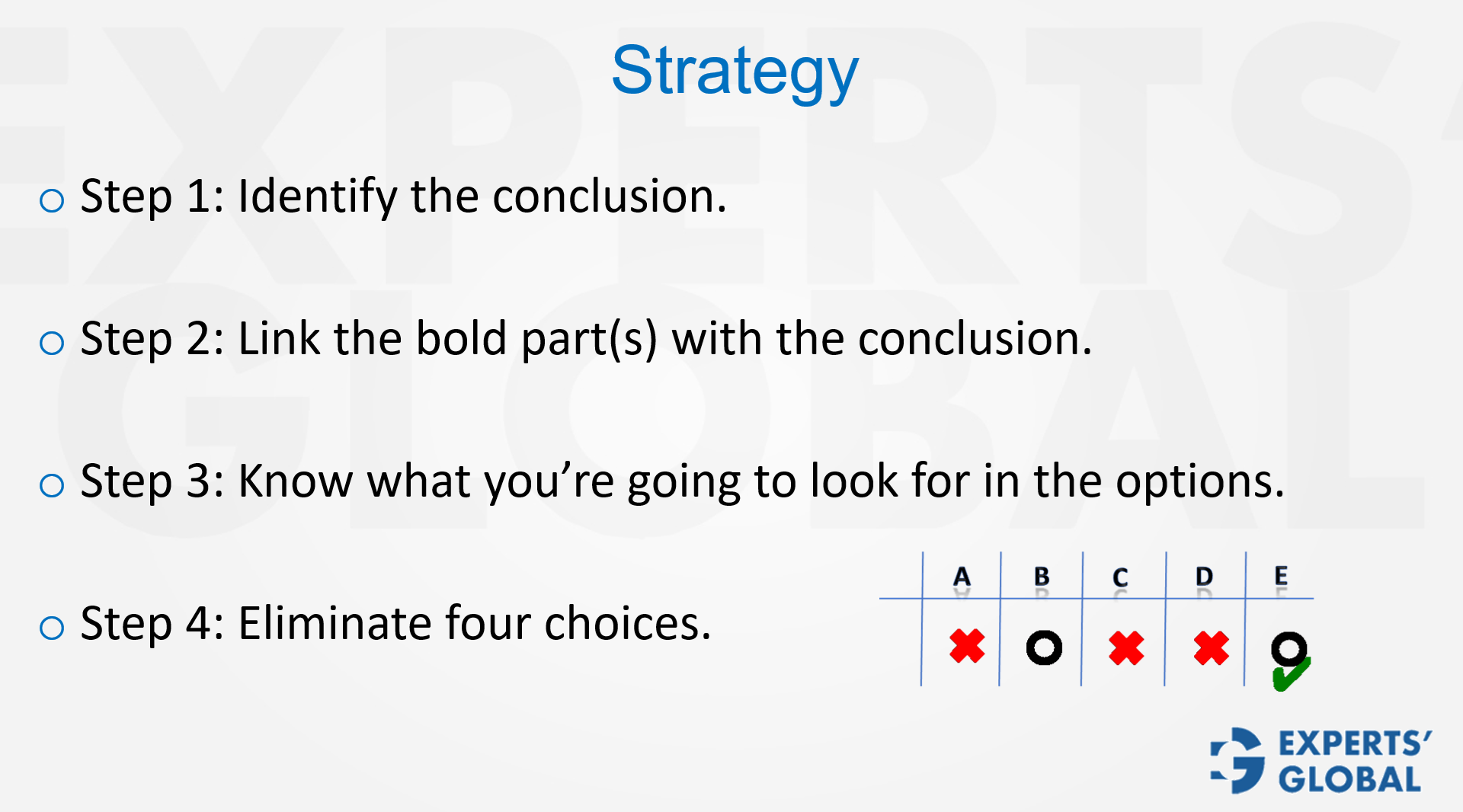Invest 30 seconds...
...for what may lead to a life altering association!
Help Line
- +91.8800.2828.00 (IND)
- 1030-1830 Hrs IST, Mon-Sat
- support@expertsglobal.com
...for what may lead to a life altering association!


With sound approach, CR Boldface questions can be solved with high accuracy: identify the main conclusion, link each bold with the conclusion, and set a broad expectation from the correct choice. Use elimination to test options precisely. Undergo adequate practice and duly analyze your mistakes.
Boldface questions reward structure and precise language. This overview previews a routine: locate the passage’s main conclusion, relate each boldfaced statement to it by role, and anticipate the likely pairing before viewing options. Duly master the frequently used vocabulary in the boldface questions. The video and article outline a role glossary, a grid-based elimination checklist, and practice prompts to internalize the workflow. These habits cultivate disciplined reasoning for GMAT prep and argument mapping valued in MBA admissions. Read on to set up the method before the detailed treatment that follows.

Boldface questions in Critical Reasoning are often regarded as complex, but the truth is that they are deeply logical and highly learnable. If you follow the right steps, accuracy becomes achievable, and solving these questions within the time available, with high accuracy is comfortably achievable.

The strategy remains simple yet powerful:
GMAT CR boldface questions deploy nuanced vocabulary that confuse you on the exam, under time pressure. Thus, vocabulary mastery is essential. Revisiting the list of commonly used terms helps you decode even the most complex answer structures quickly. If needed, watch our vocabulary reinforcement lesson and the subsequent drills more than once to internalize these distinctions.
Among these, the most crucial for GMAT Boldface reasoning are conclusion, circumstance, evidence, fact, opinion, judgment, and assumption.


Boldface questions test structure thinking and reasoning clarity. With consistent practice, you will find that 100 percent accuracy is possible. Do not let the length of the passage or the complexity of the wording intimidate you. Approach each question logically, and let your preparation guide you. Developing this clarity not only improves your accuracy in Critical Reasoning but also strengthens your overall GMAT performance.
Boldface questions become approachable with a structured process. First, identify the main conclusion, then link each boldface with the conclusion. Prephrase expected roles for each boldface before reading options, and apply grid-based elimination to decode complex vocabulary. Vocabulary mastery ensures precision in interpreting answer choices. With discipline and practice, accuracy is consistently attainable. Applying this method in GMAT simulations strengthens speed, confidence, and reasoning clarity, turning Boldface questions into reliable scoring opportunities in Critical Reasoning.
Boldface questions remind us that clarity emerges when every element is seen in relation to the whole. In GMAT preparation, this discipline teaches us to focus less on intimidating wording and more on structure and purpose. In MBA applications, the same principle applies – essays and interviews succeed when evidence, reasoning, and conclusion align seamlessly. In life, too, progress comes from recognizing the role each piece plays in shaping the final outcome. Each GMAT mock becomes a rehearsal in this art of structure, sharpening logic and perspective beyond the exam.